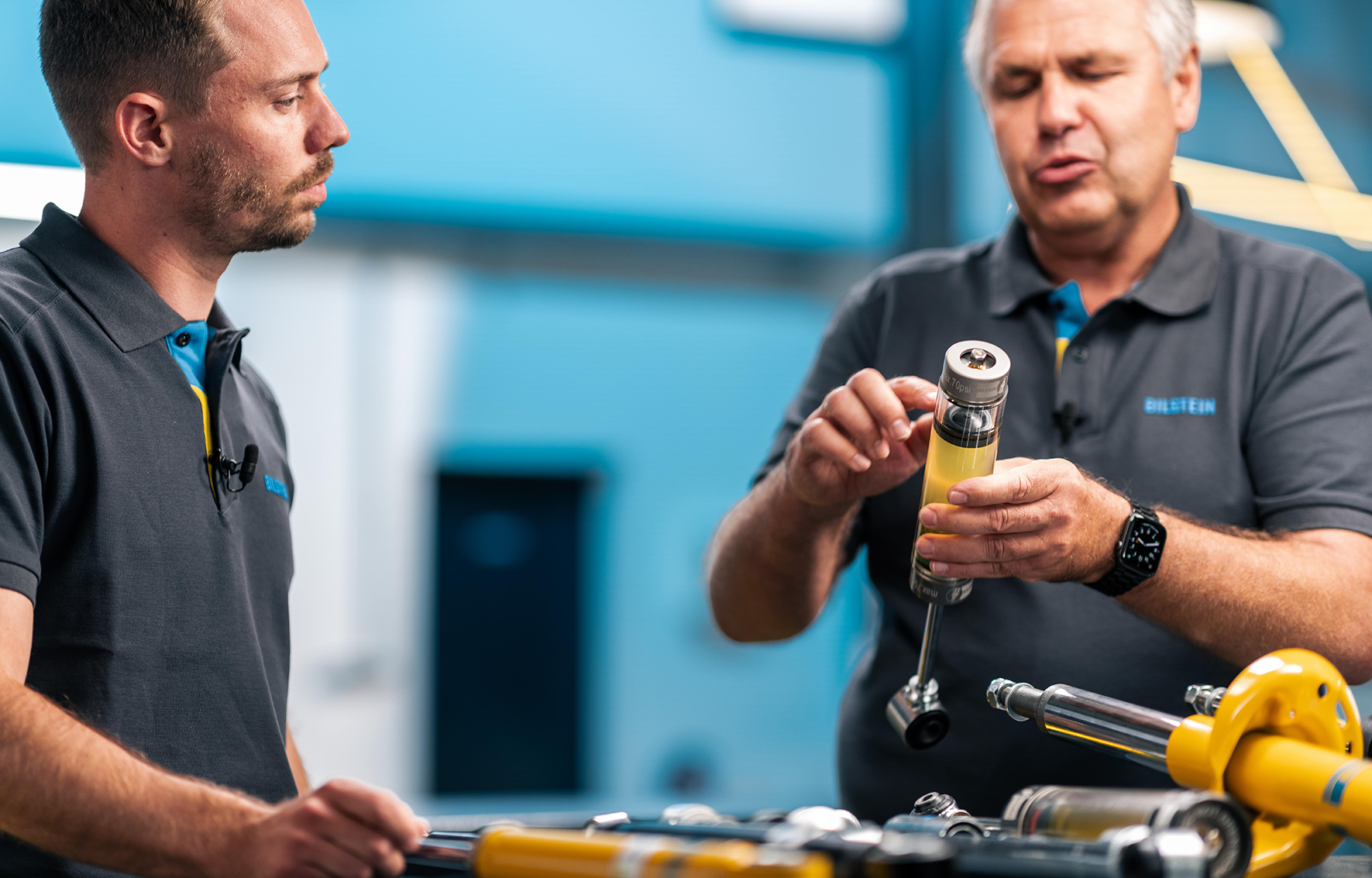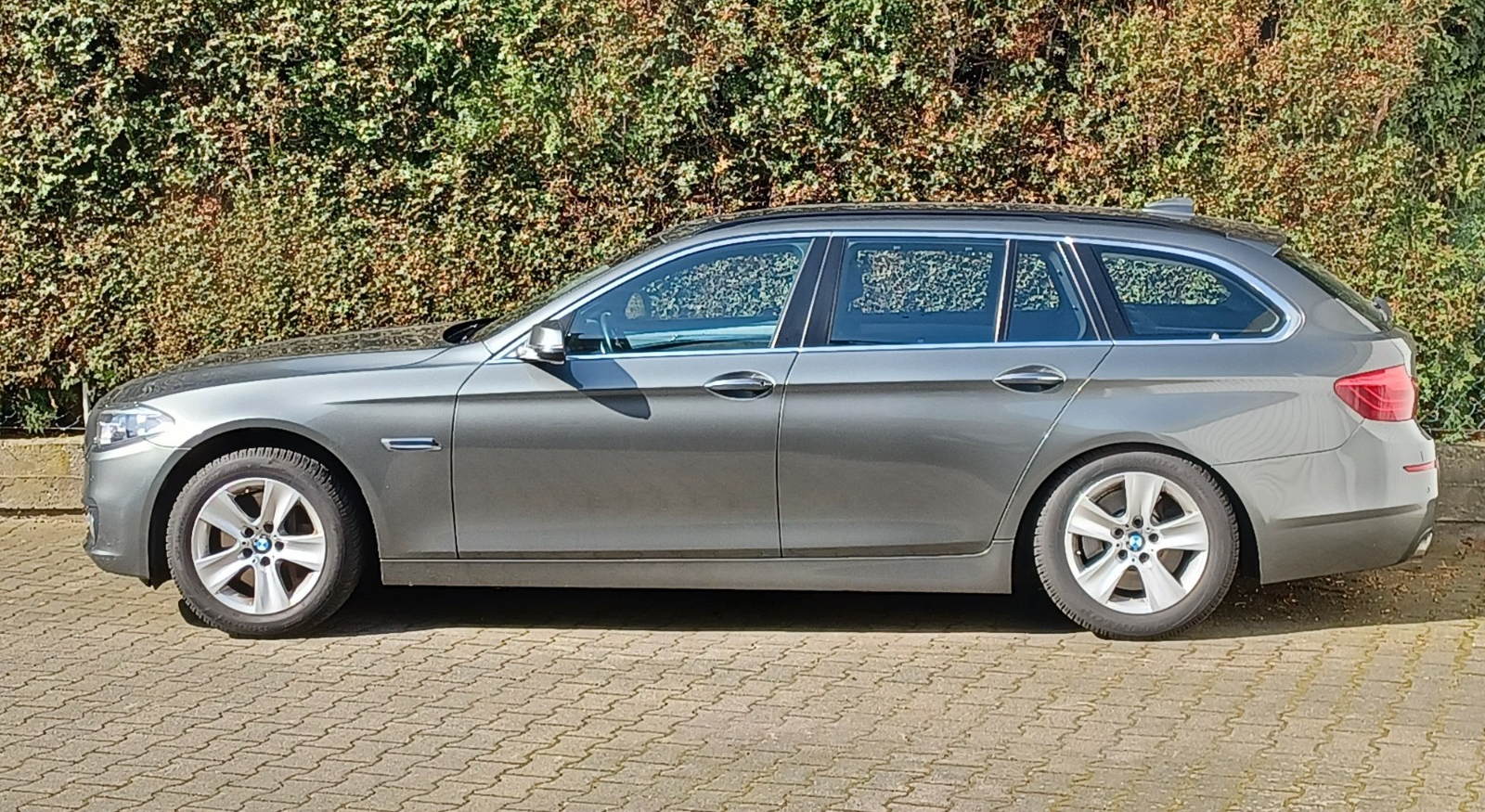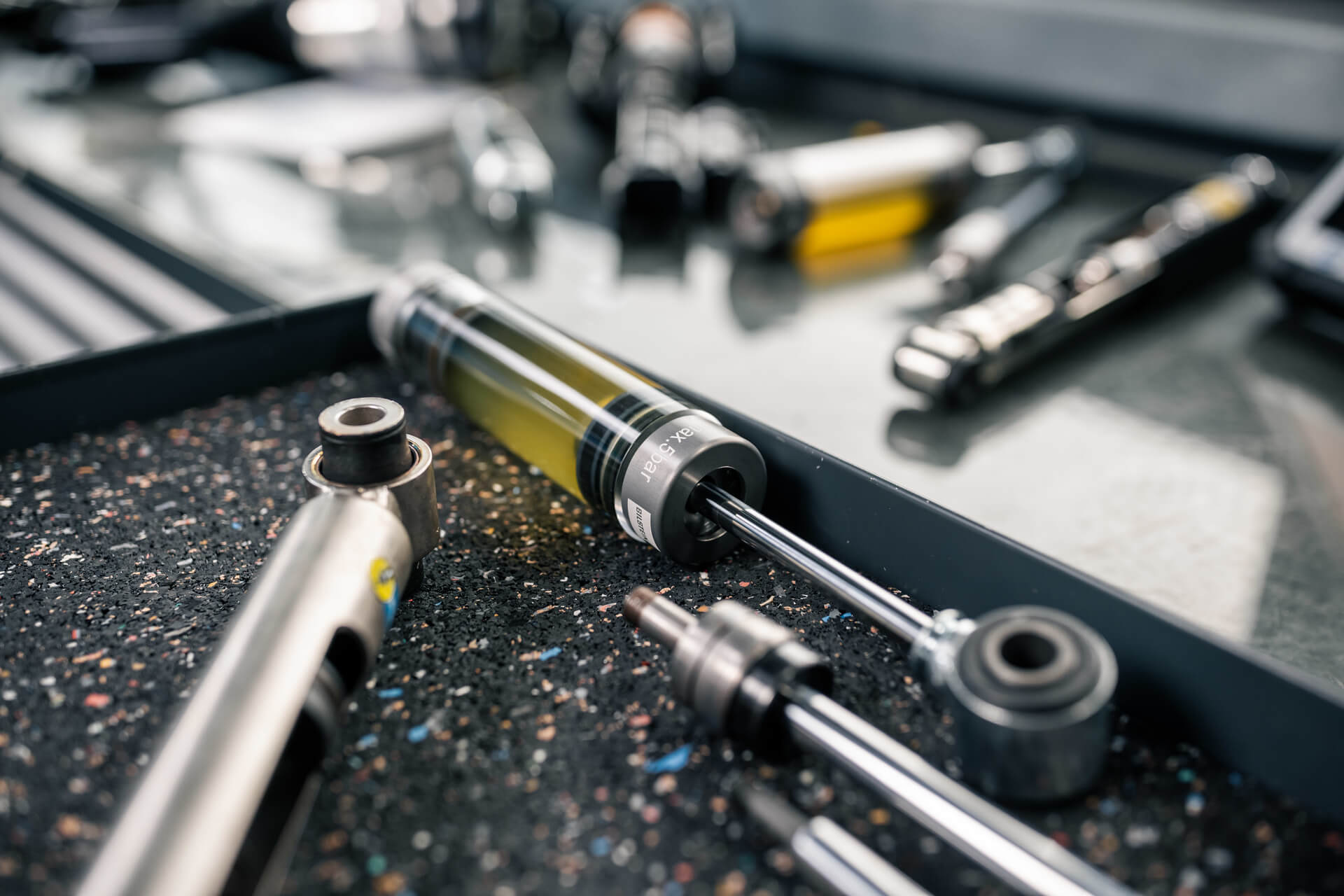

Shock absorber failure analysis: Different shock absorber designs require different approaches
Not all shock absorbers are the same – a fact that is especially true when it comes to problems with the suspension. Monotube shock absorbers, twin-tube shock absorbers and electronic systems: different types require different approaches to shock absorber fault analysis in the workshop. Rainer Popiol, our head of BILSTEIN Academy, reveals what mechanics need to look out for – and why certain dampers become harder when oil leaks out.
In this episode, we also have another small but nice present for automotive professionals!
In the event of problems with the shock absorbers, mechanics should first be aware of which system they are dealing with in order to quickly and safely track down the source of the fault. This is because there are usually different symptoms. “Most shock absorbers look the same from the outside. But there are fundamental differences and functional principles”, explains Rainer Popiol with regard to the monotube shock absorber, the twin-tube shock absorber and electronic systems.
Workshop-Tip 5: Shock absorber failure analysis
Monotube shock absorber
In the monotube shock absorber, the working piston operates in a tube, the working chamber filled with oil as well as the piston chamber are located here between the closure package and a separating piston. From the piston chamber, the oil is pressed back and forth through the valve (spring disc pack) in the working chamber, creating the required damping forces for the compression and rebound stages. Behind the separating piston is the gas chamber. This gas has two tasks, as Rainer Popiol reveals: “One task is to compress the oil column so that no bubbles form – so-called cavitation. This ensures that the monotube shock absorber remains stable. In addition, the gas chamber must accommodate the volume of the piston rod, because when the shock absorber is working, the piston rod is pressed into the working chamber. The separating piston moves a little accordingly.”
Twin-tube shock absorber
In the twin-tube shock absorber, the working piston also works in a working chamber filled with oil. When the piston rod is pressed into the shock absorber, the oil is displaced and forced at the bottom through the bottom valve into the compensation chamber, which is located between tube one and tube two. “Unlike the monotube shock absorber, however, the twin-tube shock absorber does not work independently of position”, says Rainer Popiol. “If the shock absorber is inclined more than 45 degrees, it pulls the gas into the inner tube due to the inclined position. Then the gas pressure shock absorber no longer works force-locked.”
Fault analysis with shock absorbers is not always easy
Whether it’s a monotube shock absorber or a twin-tube shock absorber, mechanics have to keep a few things in mind when it comes to fault analysis. Rainer Popiol: “Usually it is like this: If the shock absorber loses oil, it becomes softer. But then there is a phenomenon. There is a type of construction where the shock absorber becomes tighter. This means that the piston rod no longer enters the shock absorber properly. This is the monotube shock absorber. When it loses oil, the separating piston moves upwards towards the working chamber. At some point, the piston rod then touches the separating piston and that gives a loud knocking noise and the car behaves harder.”


Whether you are dealing with a monotube or a twin-tube shock absorber is not always obvious at first glance, even to automotive professionals. “Shock absorbers where the tube tapers are usually a twin-tube shock absorber because there is another tube inside,” Rainer Popiol knows. “The monotube shock absorber is always cylindrical in its design because the working piston travels through the entire tube.”
Special challenge: monotube shock absorber in upside-down design
MacPherson’s struts are usually used on the front axle. Sturdy piston rods with a larger diameter are used because they take on wheel guidance tasks and therefore have to absorb large forces. Often, therefore, monotube shock absorbers are used in an upside-down design, as Rainer Popiol explains: “Then the damper is completely turned around. The piston rod is no longer at the top, but at the bottom. Two plain bearings then take over the guidance so that the high forces can be transmitted.” The special challenge when analysing the fault in the workshop: “With the monotube shock absorber, no oil can escape from the top because the piston rod is at the bottom.”
This is why it is so important for mechanics to make sure what kind of system they are dealing with when analysing shock absorber faults in the automotive workshop. “In our technical support with the twin-tube shock absorber, we are often confronted with the assumption that it is an oil leakage when some kind of emulsion leaks out. Most of the time, however, it is just leaked grease, which is quite normal. Because with the Upside-Down twin-tube shock absorber, we lubricate the aforementioned plain bearings on the tube with grease.”
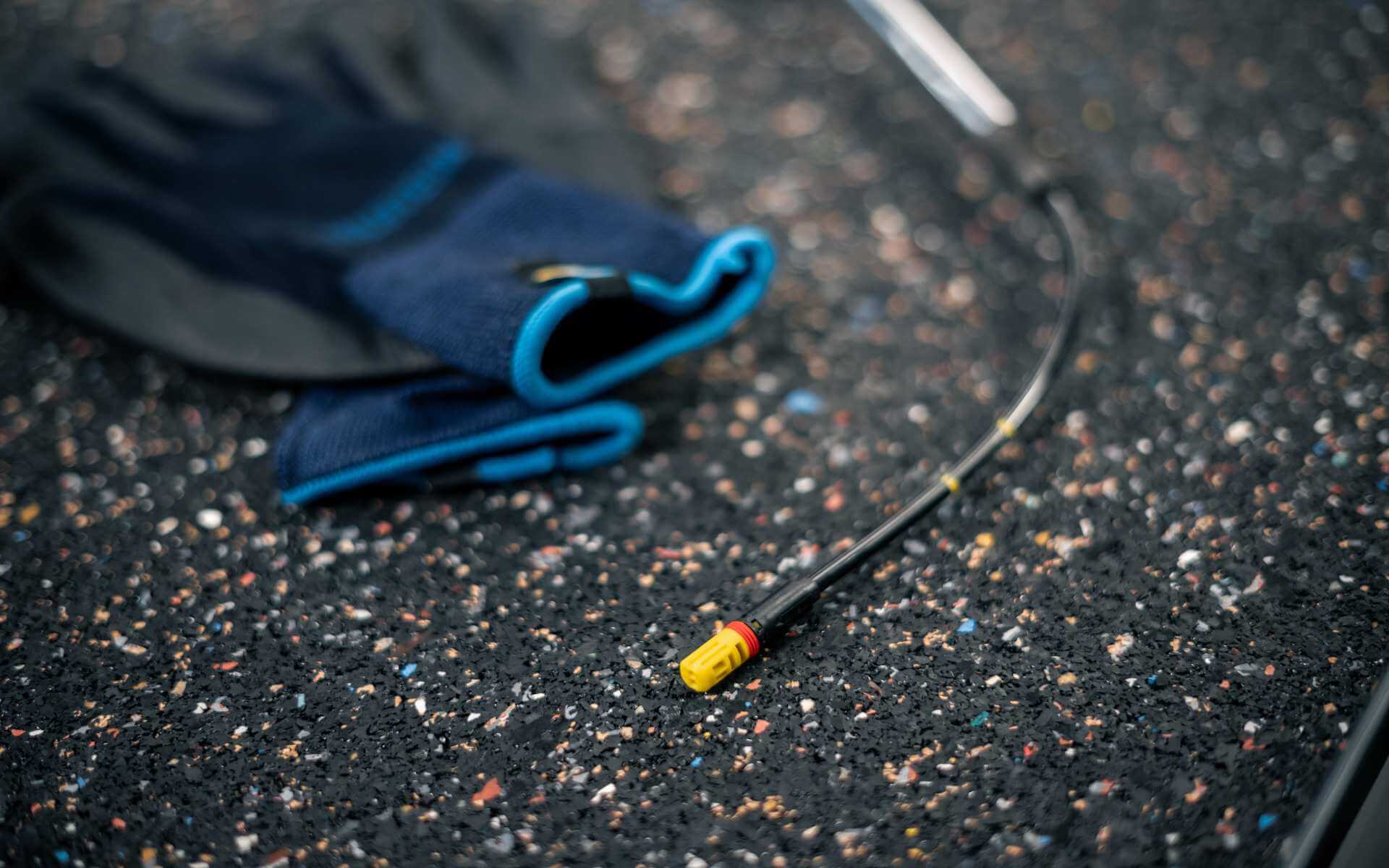
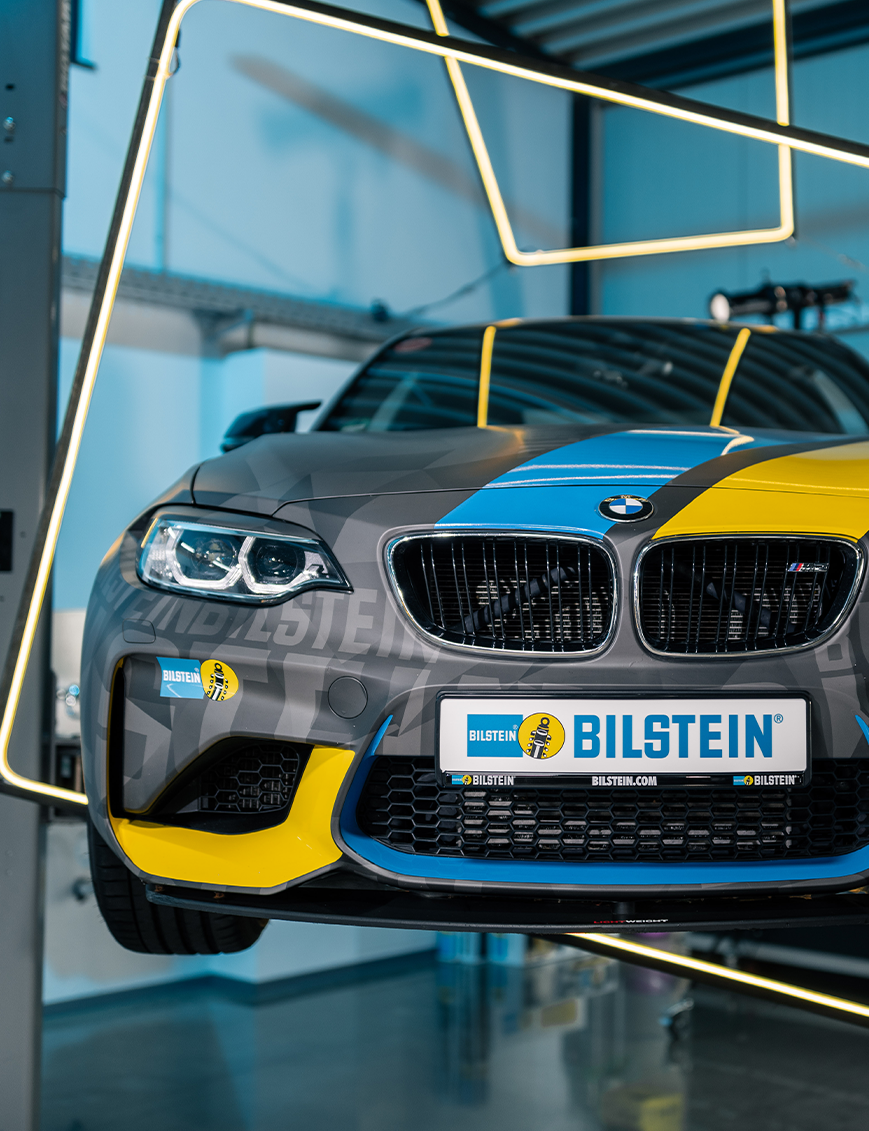
Electronic shock absorber systems
Electronic systems can usually be recognised by their wiring and externally mounted valves. Rainer Popiol: “With these active or semi-active systems, I check the electronic system with my diagnostic tools, go through the fault memory and look at the whole thing. I check if something is wrong with the cable, if I have a cable break or too much contact resistance, etc.” But looking at the electronic system is only part of the fault analysis, warns Rainer Popiol: “Of course, this is not a 100 per cent test. And I can’t check for wear at all: If the electronics are fine, but the driving behaviour is still bad, then it is quite possible that we are dealing with normal wear and tear. And then I have to check in the same way as with the passive systems.”
If problems arise, the technical support of the BILSTEIN Academy is there to help
The experts at the BILSTEIN Academy are available to help with stubborn problems and uncertainties in shock absorber fault analysis. Workshop professionals can always contact BILSTEIN’s technical support by e-mail or by phone, even if the vehicle is on the lifting platform and information is needed quickly. All information can be found within our FAQs.
